Are you navigating the complexities of a licensing agreement? Crafting a solid letter template can make the process smoother and ensure all parties are on the same page. With clear terms and a structured format, you'll foster transparent communication and protect your interests. Ready to dive deeper into creating the perfect licensing agreement template? Read more to discover essential tips and tricks!

Parties Involved
In a licensing agreement, the parties involved typically include the Licensor (the original creator or owner of the intellectual property, such as a software developer or a brand owner) and the Licensee (the entity seeking permission to use that intellectual property, such as a manufacturer or a distributor). The Licensor grants certain rights, which can include the use, reproduction, or modification of the intellectual property under specified conditions. The agreement stipulates terms including territory ( geographic areas like the United States or Europe), duration (time frame such as 5 years), and royalties (financial compensation often calculated as a percentage of sales). It may also detail responsibilities, including compliance with legal standards and confidentiality obligations. Important identifiers such as trademark registration numbers or patent numbers might be included to clarify the scope of licensed rights.
Licensing Scope and Rights
A licensing agreement outlines the boundaries and entitlements associated with intellectual property usage. Licensing scope specifies the extent of rights granted to the licensee, detailing specific areas such as geographical territories (e.g., United States, Europe, Asia), duration (e.g., five years from the signing date), and the types of media (e.g., digital, print, merchandise) permitted for use. Rights included may cover the ability to reproduce, distribute, or modify the licensed content, ensuring clarity on exclusivity (exclusive vs. non-exclusive rights) and whether sub-licensing is permitted. Clarity in this section prevents future disputes by ensuring all parties have a mutual understanding of the limitations and responsibilities associated with the license.
Terms and Duration
A licensing agreement typically outlines specific terms and duration, ensuring both parties understand their obligations. The period of the agreement may vary, often lasting from one to five years, depending on the nature of the licensed intellectual property or product. Renewal options, with stipulated notice periods, are generally included, allowing for continuation of rights if agreed by both parties. Constraints on sublicensing or modifications to the licensed content can also be detailed, ensuring that the original licensing intentions are preserved. Additionally, termination clauses specify conditions under which either party may end the agreement, such as breach of contract or insolvency. Compliance with relevant laws and regulations (such as contractual laws of the state or country) is crucial for enforceability.
Payment and Royalties
The licensing agreement outlines the payment structure and royalty rates for intellectual property use, reflecting the financial obligations of the licensee. Standard upfront payments can include an initial licensing fee, which varies based on the asset's market value, potentially ranging from thousands to millions of dollars depending on exclusivity and market scope. Royalties, typically expressed as a percentage of gross sales revenue, can average anywhere from 5% to 25%, contingent on industry standards and negotiation outcomes. Payment schedules may specify quarterly or annual payments, ensuring timely compensation to the licensor. Detailed accounting provisions may require the licensee to maintain meticulous records, facilitating transparent audits and adherence to compliance standards. Additionally, clauses may address minimum guarantees, establishing a baseline for royalties to protect the licensor's interests. Overall, the payment and royalties section is crucial for ensuring equitable financial relations between involved parties.
Termination Conditions
Termination conditions in a licensing agreement define specific scenarios under which the contract may be dissolved. Common grounds include breach of contract, occurring when either party fails to adhere to agreed-upon terms, with remedies often outlined in detail. Another condition is insolvency, substantiated by a party's inability to meet its financial obligations, often indicated by bankruptcy filings or significant debts. Additionally, failure to utilize licensed intellectual property (IP) can lead to termination, typically defined by inactivity over a predetermined period--often six months to one year--ensuring the license remains in practical use. Compliance with governing laws, usually stated under applicable jurisdiction, can also lead to termination if either party engages in illegal activities. Finally, mutual consent can provide a voluntary pathway to end the agreement, facilitated by written consent from both parties involved.

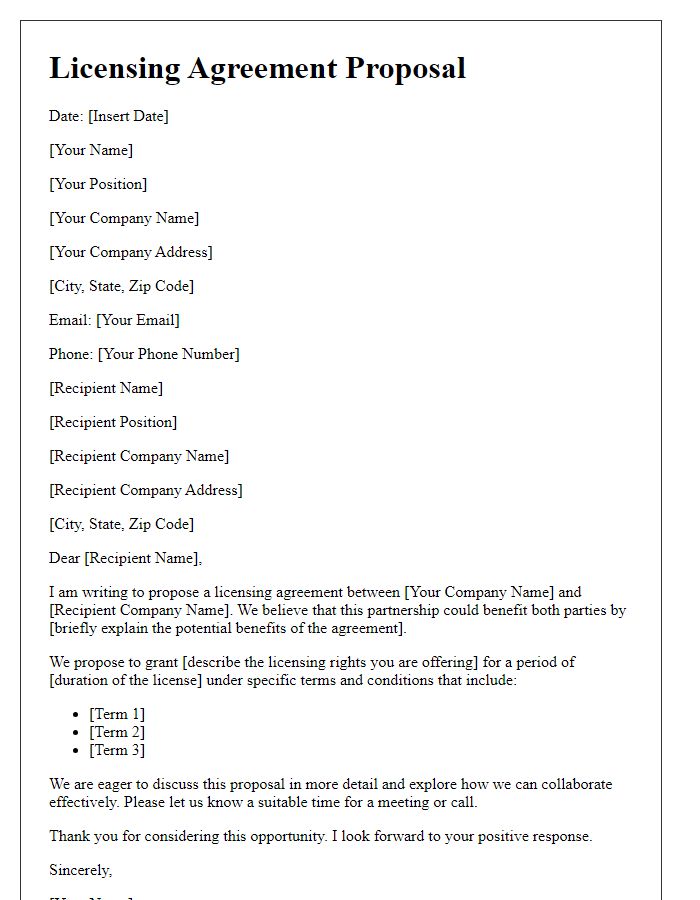
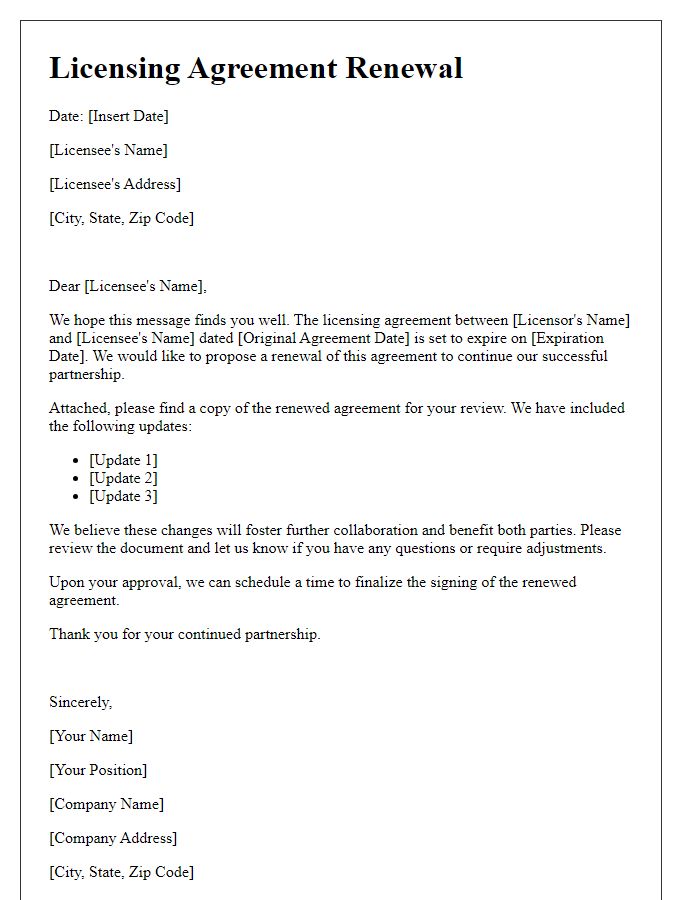
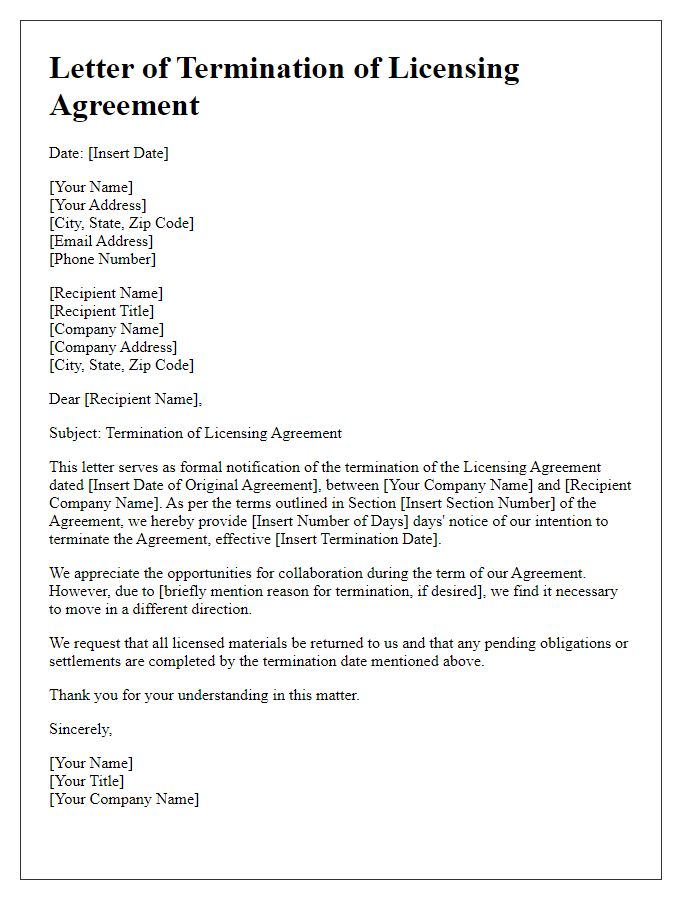

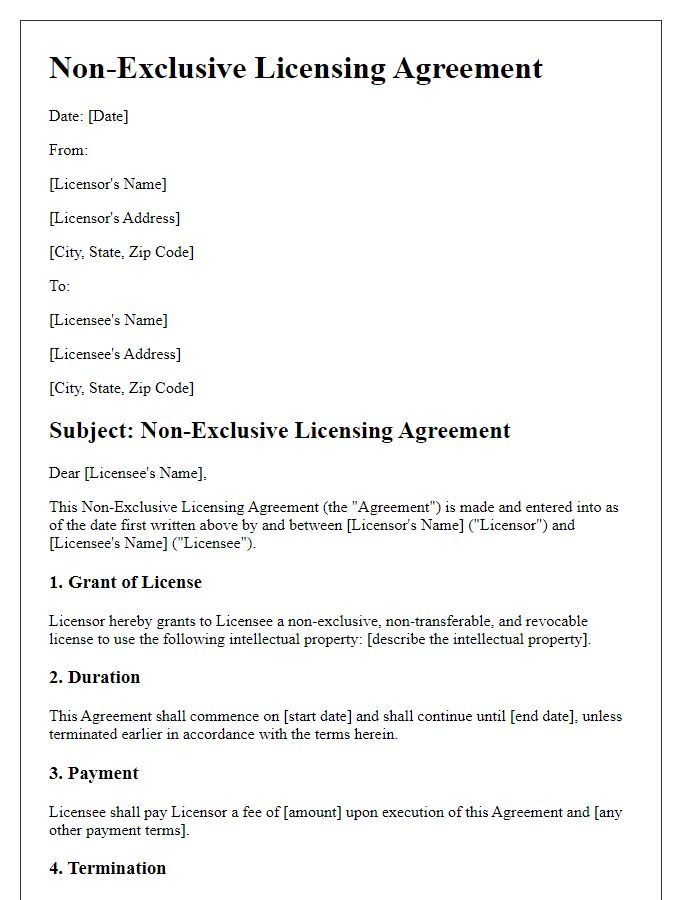
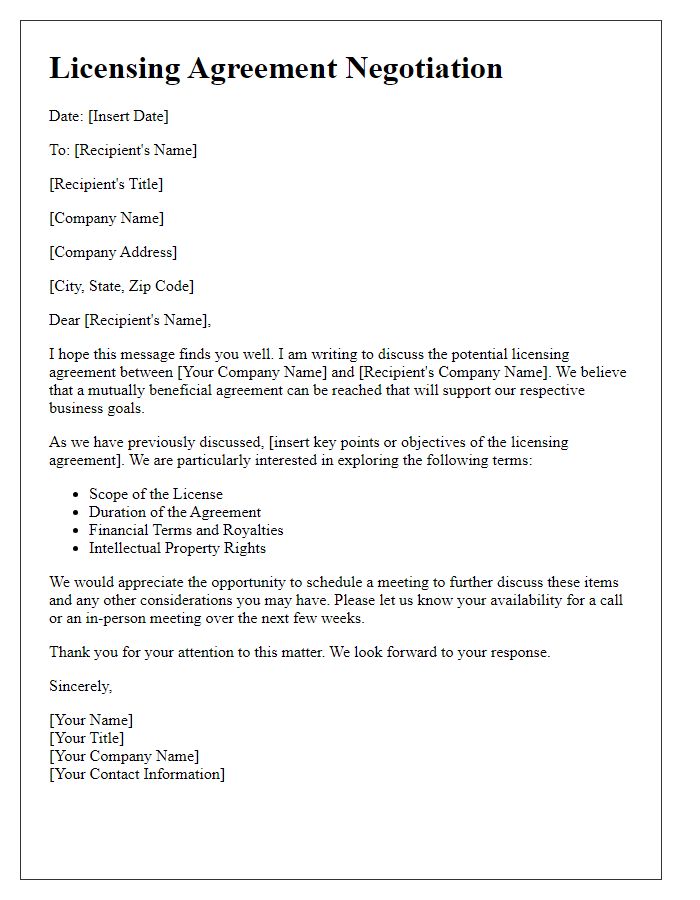
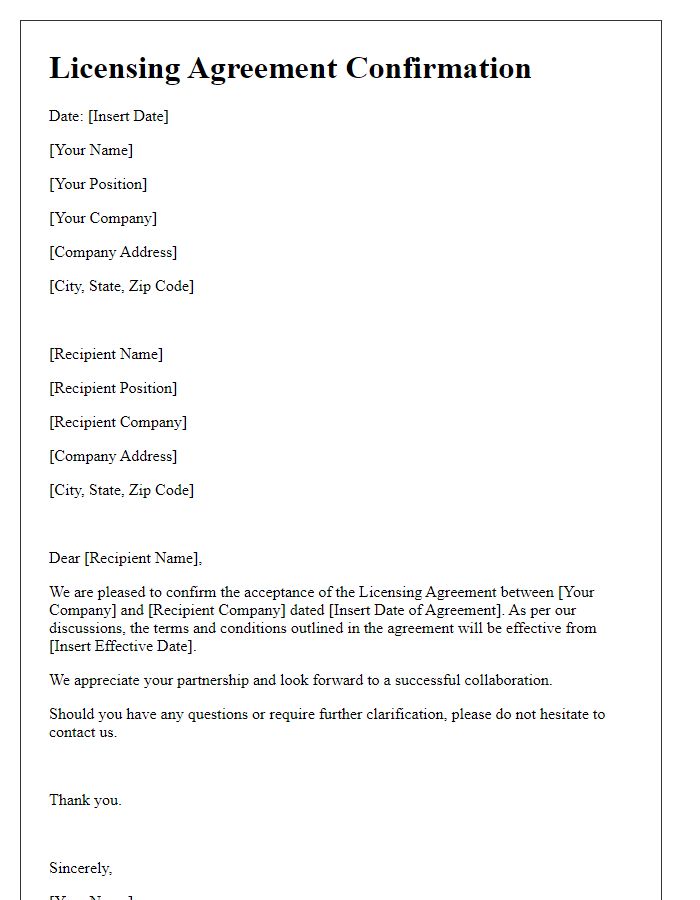
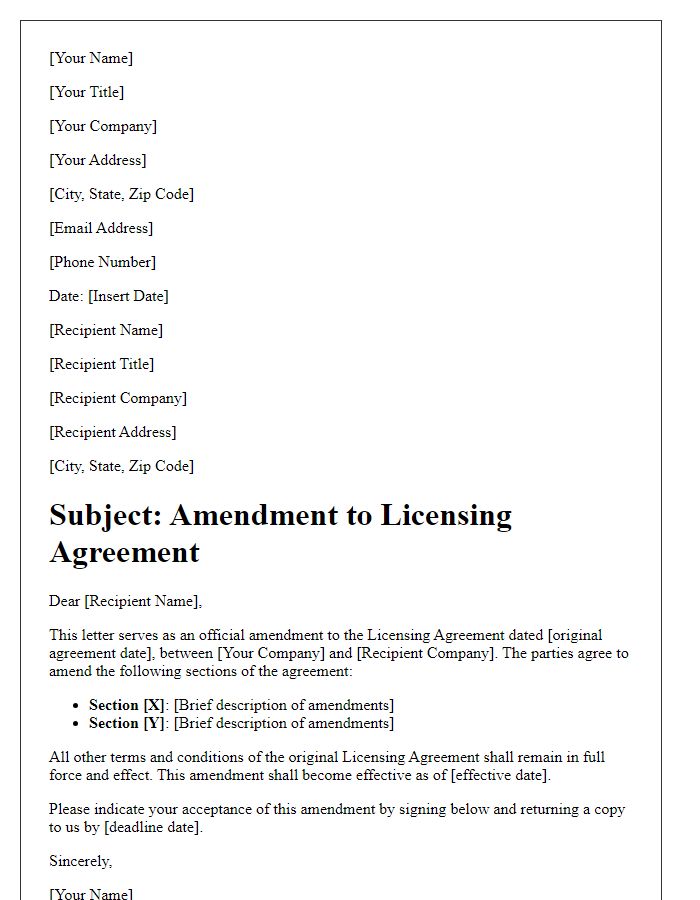
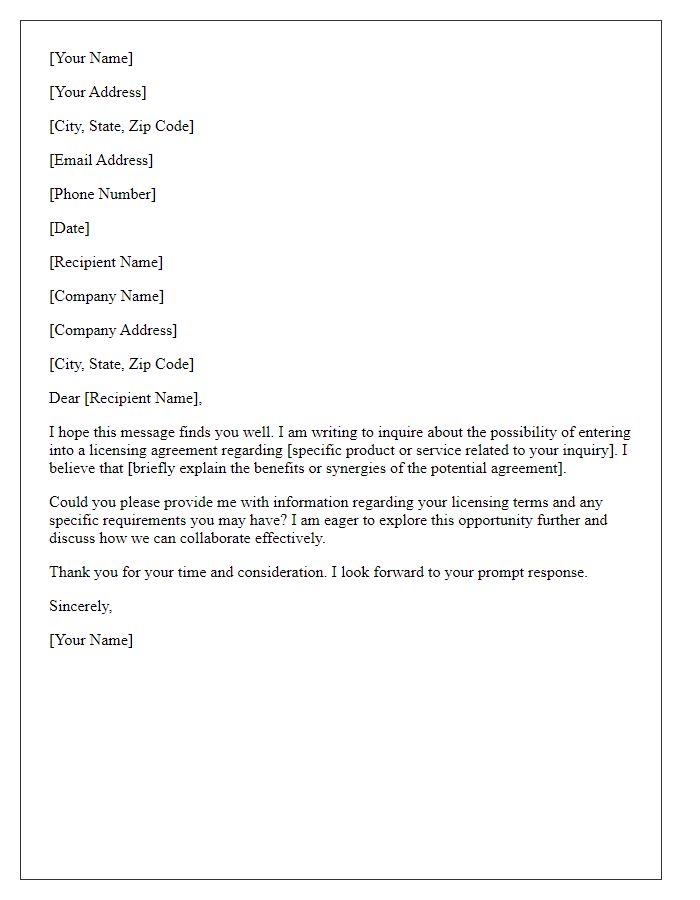
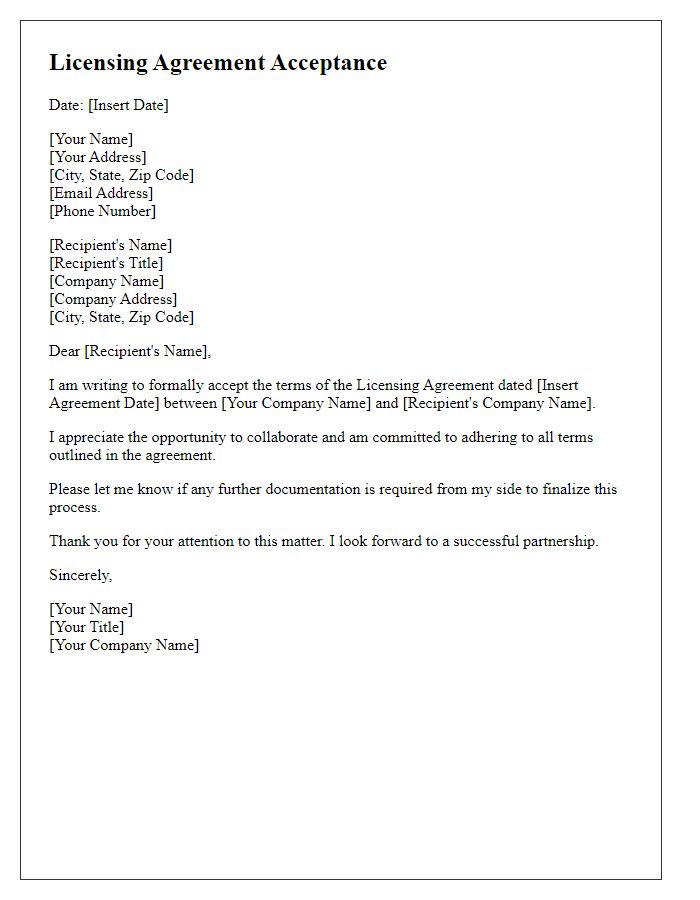


Comments